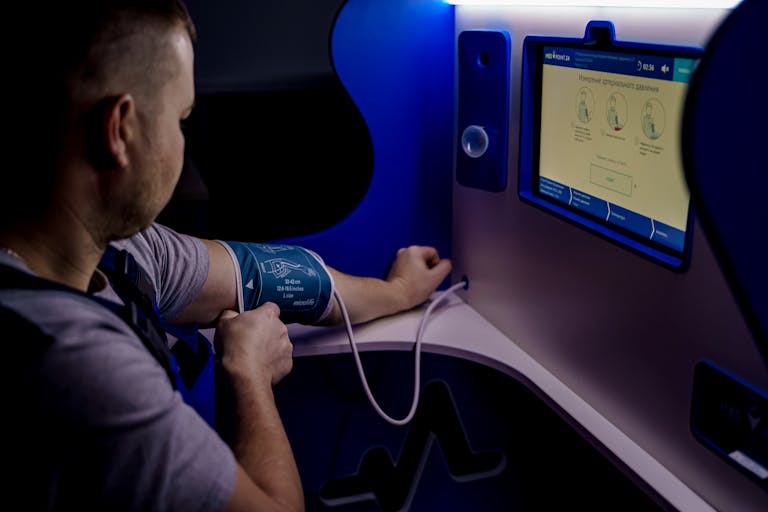The Future of AI in Disaster Risk Reduction 🌍
As we navigate the complexities of climate change and increasing natural disasters, the role of artificial intelligence (AI) in disaster risk reduction (DRR) is becoming more pivotal. With AI’s ability to analyze vast amounts of data and predict potential risks, it offers groundbreaking opportunities to improve how we prepare for and respond to emergencies. In this blog post, we’ll explore the future of AI in DRR, discussing its potential, challenges, and the exciting possibilities it holds.
Table of Contents
1. Introduction to AI in Disaster Risk Reduction
2. How AI is Revolutionizing DRR 🌪️
3. Challenges and Ethical Considerations
4. The Road Ahead: Future Possibilities 🚀
5. Conclusion
6. FAQs
Introduction to AI in Disaster Risk Reduction
Disaster risk reduction is all about minimizing the damage caused by natural hazards like earthquakes, floods, and storms. Traditionally, this has involved a mix of planning, infrastructure, and education. However, with the advent of AI, we’re seeing a shift towards more predictive and data-driven approaches.
How AI is Revolutionizing DRR 🌪️
AI has brought a wave of innovation to disaster risk reduction. Here are some key areas where AI is making a significant impact:
Predictive Analytics
AI’s ability to process and analyze large datasets allows for more accurate predictions of natural disasters. Machine learning algorithms can identify patterns in historical data, offering insights into future events. This means communities can be alerted earlier, potentially saving lives and reducing damage.
Real-Time Monitoring
With the help of AI, real-time monitoring of environmental conditions has become more efficient. Drones and satellites equipped with AI capabilities provide continuous data streams, which are crucial for timely responses to disasters.
Resource Allocation
AI can optimize the allocation of resources during a disaster. By analyzing current needs and available resources, AI systems can ensure that aid is distributed effectively, avoiding bottlenecks and ensuring help reaches those who need it most.
Challenges and Ethical Considerations
While AI offers many benefits, it also comes with challenges. One major concern is data privacy. As AI systems require vast amounts of data, ensuring the privacy and security of this information is crucial. Additionally, there is the risk of over-reliance on AI, which could lead to complacency in human oversight.
Moreover, ethical considerations must be addressed. AI systems should be transparent and unbiased, ensuring that all communities, especially the most vulnerable, receive equitable support during disasters.
The Road Ahead: Future Possibilities 🚀
Looking forward, the potential for AI in disaster risk reduction is enormous. Imagine AI systems that can not only predict disasters but also simulate various scenarios to provide actionable strategies for governments and organizations. Furthermore, integrating AI with other technologies like the Internet of Things (IoT) could create smarter, more responsive infrastructures.
As researchers and developers continue to innovate, the dream of creating a world better prepared for disasters is becoming a reality.
Conclusion
The future of AI in disaster risk reduction is bright, promising more efficient, effective, and equitable responses to natural hazards. By embracing these technologies, we can create safer communities and save countless lives. As we move forward, it’s crucial to address the ethical and practical challenges to unlock the full potential of AI in DRR.
FAQs
Q: How does AI predict natural disasters?
A: AI uses machine learning algorithms to analyze historical data and identify patterns that may indicate future disasters, enabling earlier warnings and preparation.
Q: What are the ethical concerns related to AI in DRR?
A: Key concerns include data privacy, potential bias in AI systems, and ensuring equitable access to AI-driven resources and support.
Q: Can AI completely replace human roles in disaster management?
A: While AI can enhance disaster management, human oversight remains crucial for decision-making and ensuring ethical considerations are met.
Q: How can communities benefit from AI in disaster risk reduction?
A: Communities can benefit from earlier disaster warnings, more efficient resource allocation, and tailored strategies to minimize disaster impacts.
Q: What is the role of AI in resource allocation during disasters?
A: AI analyzes real-time data to optimize the distribution of resources, ensuring that aid reaches the right places at the right times during emergencies.

